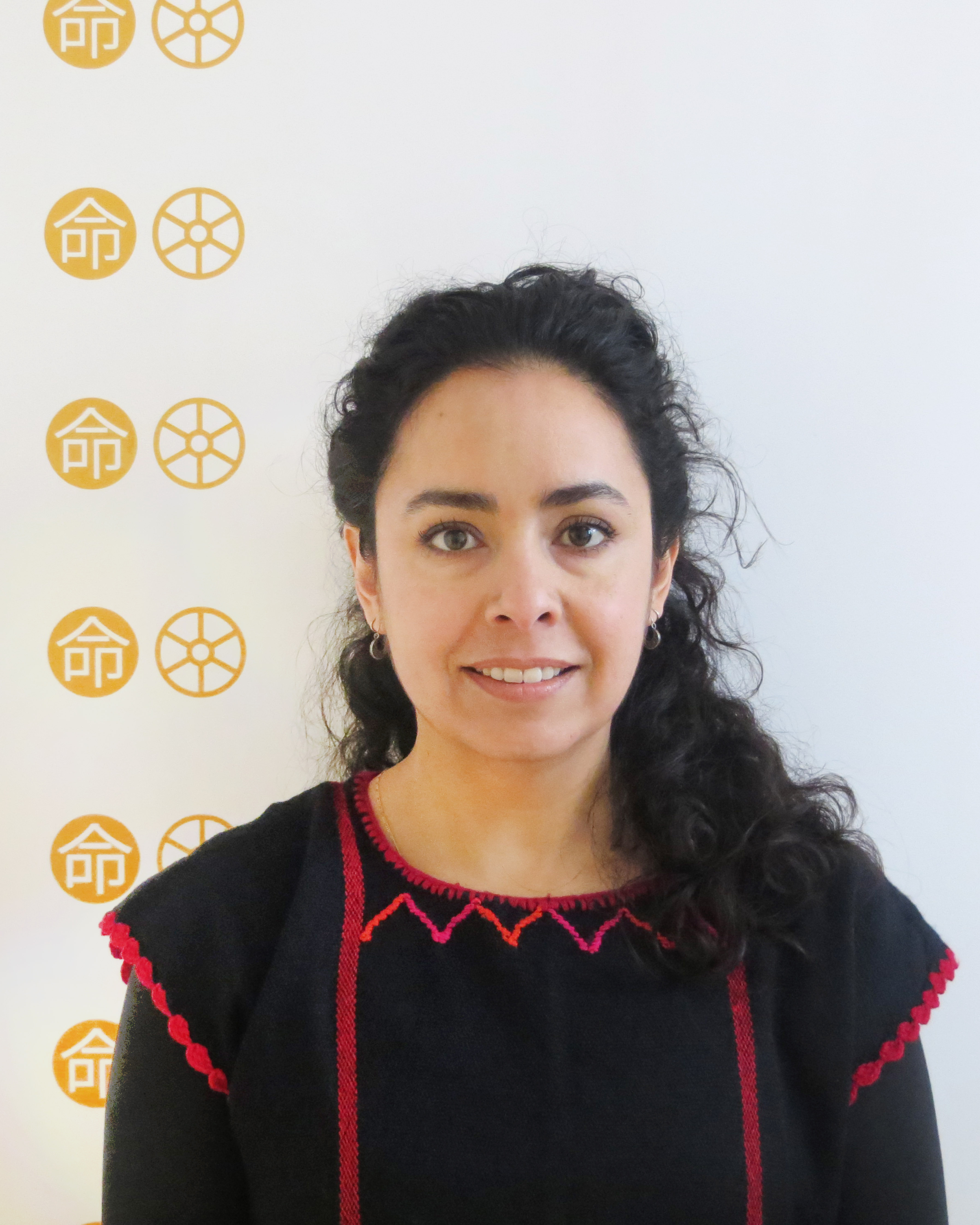Dr. Araceli Rojas Martinez Gracida

Internationales Kolleg für Geisteswissenschaftliche Forschung "Schicksal, Freiheit und Prognose. Bewältigungsstrategien in Ostasien und Europa"
Hartmannstr. 14
91052 Erlangen
- E-Mail: araceli.mg.rojas@fau.de
Home Institution: Warsaw University
IKGF Visiting Fellow October 2017 – March 2018
(Last change of profile by end of stay)
IKGF Research Project:
Curriculum Vitae
Araceli Rojas Marítnez Gracida studied Archaeology and Anthropology in Mexico. For her undergraduate research she examined the pictography on 13-14th century polychrome ceramics from Central Mexico, whose motifs are similar to those found in the calendrical, ritual and divinatory codices of pre-colonial times. Subsequently, she worked as an archaeologist in the southern province of Oaxaca, Mexico. This is where some of the codices originate, and where the worldview and ritual practices of indigenous peoples show a strong cultural continuity. In 2016, Araceli obtained a position on the 'Keeping the Days: Time and Identity in Middle America' project, hosted by Leiden University, the Netherlands. For this project, she carried out ethnographic research in a small indigenous community of Oaxaca, where a calendar of 260 days, the basic and sacred time unit in Mesoamerican precolonial cultures, remains in use today. She documented this calendar along with its social context, rituals and associated worldview symbolisms. One of the most interesting revelations arising from this research was the strong bond between this ancient form of reckoning time and divination; in this case, through the technique of casting and reading maize seeds. The outcome of this investigation drove her to suggest that maize divination, besides being a therapeutic tool for gaining consciousness of oneself, results in images that can be read in a similar way to pre-colonial codices. From 2011 to 2017, Araceli worked as lecturer and Assistant Professor in the faculty of Archaeology at Leiden University.
Selected Publications
Book
| 2014 | El tiempo y la sabiduría: un calendario sagrado entre los ayöök de Oaxaca. Oaxaca: Fundación Harp Helú. |
Articles
| "El calendario de San Cristóbal Chichicaxtepec, Mixe: Mujeres que cuentan los días, dirigen los rituales y saben curar" (forthcoming). | |
| 2016 | "Wintsë'ëkë: el calendario sagrado y los actos de respeto a la Tierra entre los ayöök de Oaxaca, México", in: En El arte de pedir, ed. by Florencia Tola y Andrés Daupuez, Cordóba: Eduvim. |
| 2016 | "Casting Maize Seeds in an Ayöök Community: An Approach to the Study of Divination in Mesoamerica", in: Ancient Mesoamerica 27/2, pp. 461-478. |
| 2016 | "Reading Maize: A narrative and psychological approach to the study of divination in Mesoamerica", in: Journal for the Study of Religions and Ideologies 15/43, pp. 224-246. |
| 2013 | "Time and Wisdom: A Sacred Calendar Among the Ayöök People of Oaxaca", in: Indiana 30, pp. 219-245. |
| 2009 | "Las vasijas polícromas tipo Silvia de Cholula con el glifo de ofrenda", in: Mexicon 31/1, pp. 18-24. |
| 2009 | (with Maarten Jansen) "Una denuncia ante la reedición hecha por Ignacio Ortíz Castro de Ita Andehui. Leyenda Mixteca", in: Educación Comunal 2, pp. 55-61. |
| 2009 | "Manuel Martínez Gracida, respeto y dignidad en el estudio de la historia cultural de Oaxaca", in: Proceedings of the XV AHILA Congress, Leiden. |
| 2009 | (with Maarten Jansen) "Recordando a don Manuel Martínez Gracida", in: "Introducción a los manuscritos de Manuel Martínez Gracida" of the digital edition of the Manuel Martinez Gracida Collection. |
| 2008 | "Los entretenedores en los polícromos del tipo Albina de Cholula: una propuesta iconográfica", in: Arqueología Segunda Época 39, pp. 77-92. |
| 2008 | "La iconografía e iconología relacionada con el sol en polícromos de Cholula", in: Arqueología Segunda Época 37, pp. 140-154. |


